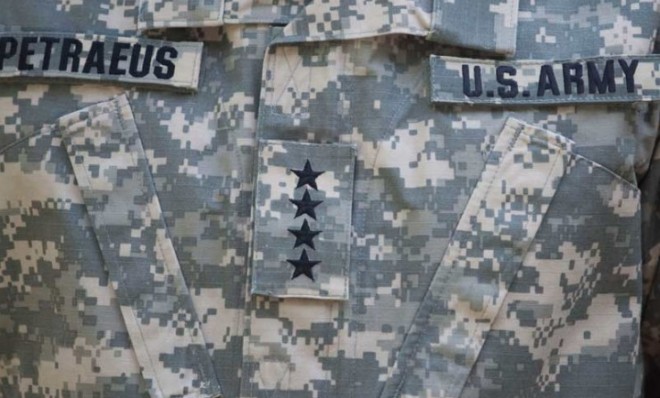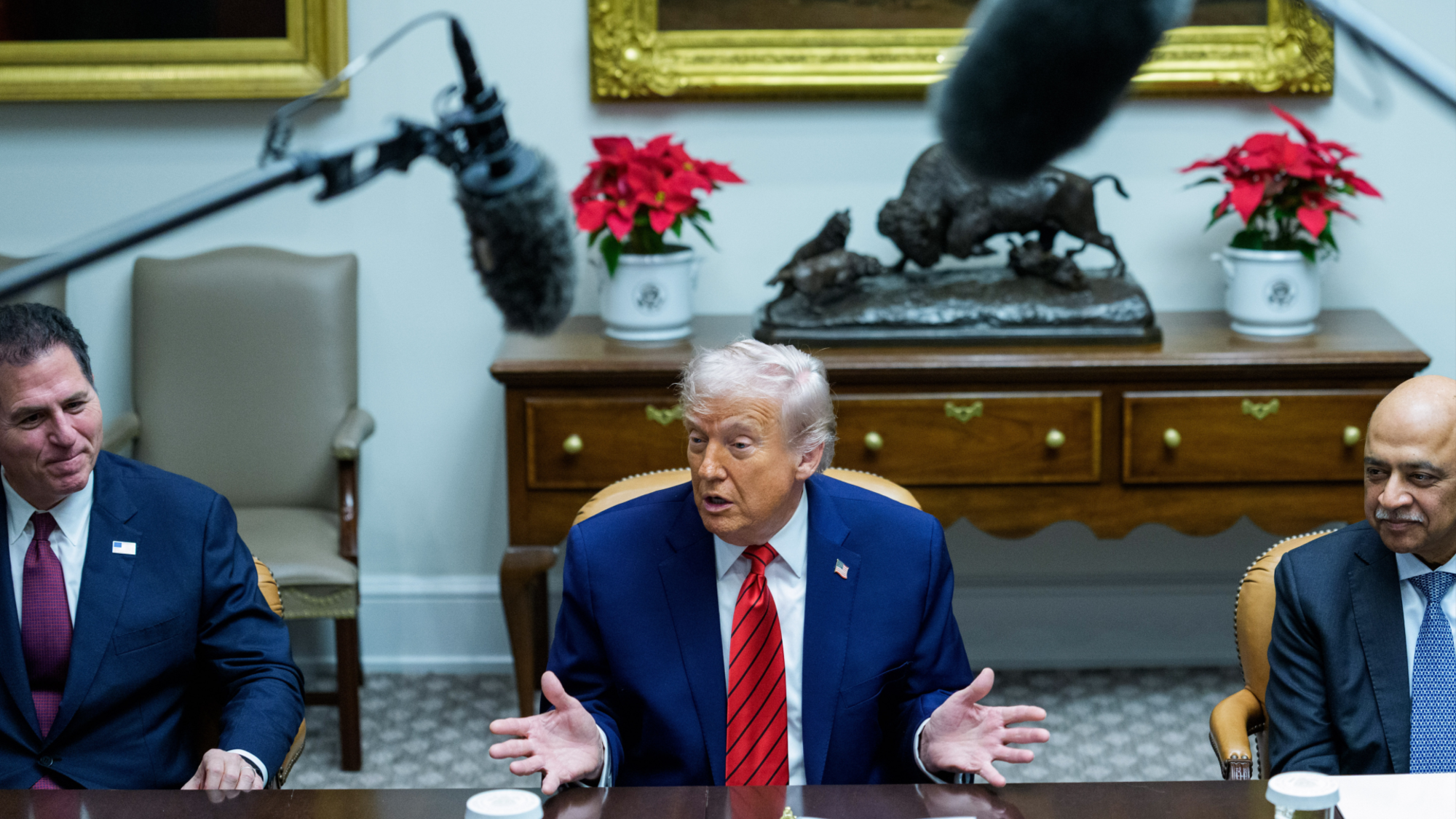The irresponsibly stupid and dangerous camouflage patterns of the U.S. military
You'd think the military would want uniform patterns that keep its members safe. And yet somehow, "distinctiveness" has trumped safety


When the Marine Corps selected a digital pattern for its combat uniform in 2002, the U.S. military as a whole seemed to fracture, with each branch wandering aimlessly in a bizarre search for sartorial identity. It's been a long, strange trip since. So let's take a brief look at the camouflage patterns of the U.S. military, and the sorry stories of their adoptions.
Universal Camouflage Pattern (U.S. Army)
The only other country that uses the Universal Camouflage Pattern (see the photos here) for its military is Kazakhstan. That's pretty much everything you need to know about its effectiveness. Make no mistake — it looks nice. The problem is, everybody can tell, because it doesn't actually blend into anything. The pattern was designed to work in urban areas, forested areas, and desert environments. Such a perfect camouflage would save a fortune, as the Army wouldn't have to issue a new pattern every time it went to war. Of course, there was actually a war going on at the time — two, in fact — and the universal pattern didn't work adequately in either of them. The Army's solution? To issue specially-patterned "MultiCam" combat uniforms to soldiers in Afghanistan, but to also continue issuing universal pattern combat uniforms to soldiers coming out of basic training. Combat uniforms, in other words, that would be used everywhere except combat.
The Week
Escape your echo chamber. Get the facts behind the news, plus analysis from multiple perspectives.

Sign up for The Week's Free Newsletters
From our morning news briefing to a weekly Good News Newsletter, get the best of The Week delivered directly to your inbox.
From our morning news briefing to a weekly Good News Newsletter, get the best of The Week delivered directly to your inbox.
Operation Enduring Freedom Camouflage Pattern (U.S. Army, U.S. Air Force)
To its credit, MultiCam actually is an effective pattern — and the Army knew that in 2004, when the military branch passed over MultiCam in favor of the universal print. Operation Enduring Freedom Camouflage Pattern, as it is officially know, is characterized by the transition colors on each of its splotches (which are themselves smaller and more refined than those of the old woodland pattern). (See the photos here.) The shades vary from brown to light tan, with vague fields of green. It has found great success in militaries the world over, from the Russian Federal Security Service to the Australian Special Air Service.
MARPAT (U.S. Marine Corps)
As the acronym suggests, MARPAT is the Marine camouflage pattern. (See the photos here.) It marked the U.S. military's first run at a digital uniform, and is (perhaps unexpectedly, given operations tempo and budgetary differences) based on the research of the Canadian Armed Forces. Unlike the Army's effort, MARPAT makes no attempt at being a universal camouflage, and there are two sets of colors used: For wooded areas, green, tan, brown, and black, and for desert environments, various shades of sand. (Though an urban variety was developed, it was not approved. Likewise, there is no arctic variation; the Marines use a different pattern entirely for snowy terrain.)
A free daily email with the biggest news stories of the day – and the best features from TheWeek.com
What makes the Marines' digital camouflage unique is also its greatest weakness for the military as a whole. MARPAT is patented, and the Corps has proven an aggressive defender of its intellectual property. While it makes sense for the Marine Corps to stop other countries from adopting such an effective camouflage, it does not make sense for the Marines to withhold permission from other branches of the U.S. military. In recent years, it has resisted efforts by the Army and Navy to derive uniforms from MARPAT and its colors. This is an intellectually indefensible position made entirely for purposes of marketing and recruiting.
Special Warfare units are the only members of the Navy who are authorized to wear the desert variant of MARPAT. The Navy as a whole wears an inexplicably blue digital print, which looks not unlike that of rushing, turbulent water — precisely the colors you wouldn't want to be wearing if you fell overboard.
Tiger Stripe (U.S. Air Force)
One would do well not to follow the Air Force. If the Army's first effort at a new pattern was idiotic, the Air Force's go was simply embarrassing. First off, the Air Force changed its uniform not because it had found a superior camouflage, but because its chief of staff wanted something that looked "distinctive." (Which is, in fact, the opposite of camouflage.) So just as the United States was gearing up for war in Iraq, the Air Force selected a new tiger stripe pattern in blue and gray made of a material too hot for comfortable use in desert environments. Mercifully, the blue color scheme was later shouted down by the ranks for being "a little too distinctive."
The tiger stripe pattern remained, but the colors were changed to those used in the ineffective Army universal camouflage pattern. (See the photos here.) Today, deployed airmen are issued MultiCam-patterned uniforms. In other words, seven years after the invasion of Afghanistan, the Air Force settled on a color scheme that can be worn everywhere except Afghanistan. If the Marines are clinging to MARPAT to attract recruits, it almost seems like the Air Force is using theirs as a recruit repellent. Only one other country uses the U.S. Air Force design for its military: The Dominican Republic, which is itself all but an operational branch of the Mexican drug cartels. In a way, that might actually be the best argument for the pattern's effectiveness.
David W. Brown is coauthor of Deep State (John Wiley & Sons, 2013) and The Command (Wiley, 2012). He is a regular contributor to TheWeek.com, Vox, The Atlantic, and mental_floss. He can be found online here.
-
 What role will Trump play in the battle over Warner Bros. Discovery?
What role will Trump play in the battle over Warner Bros. Discovery?Today’s Big Question Netflix, Paramount battle for the president’s approval
-
 ‘The menu’s other highlights smack of the surreal’
‘The menu’s other highlights smack of the surreal’Instant Opinion Opinion, comment and editorials of the day
-
 Education: More Americans say college isn’t worth it
Education: More Americans say college isn’t worth itfeature College is costly and job prospects are vanishing
